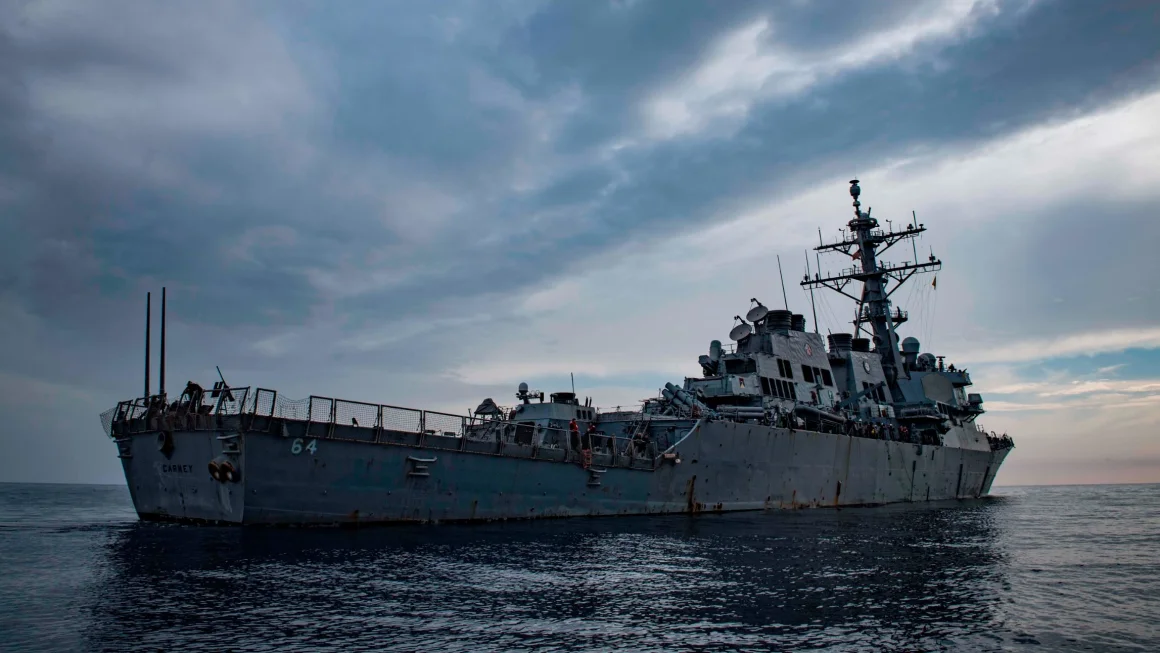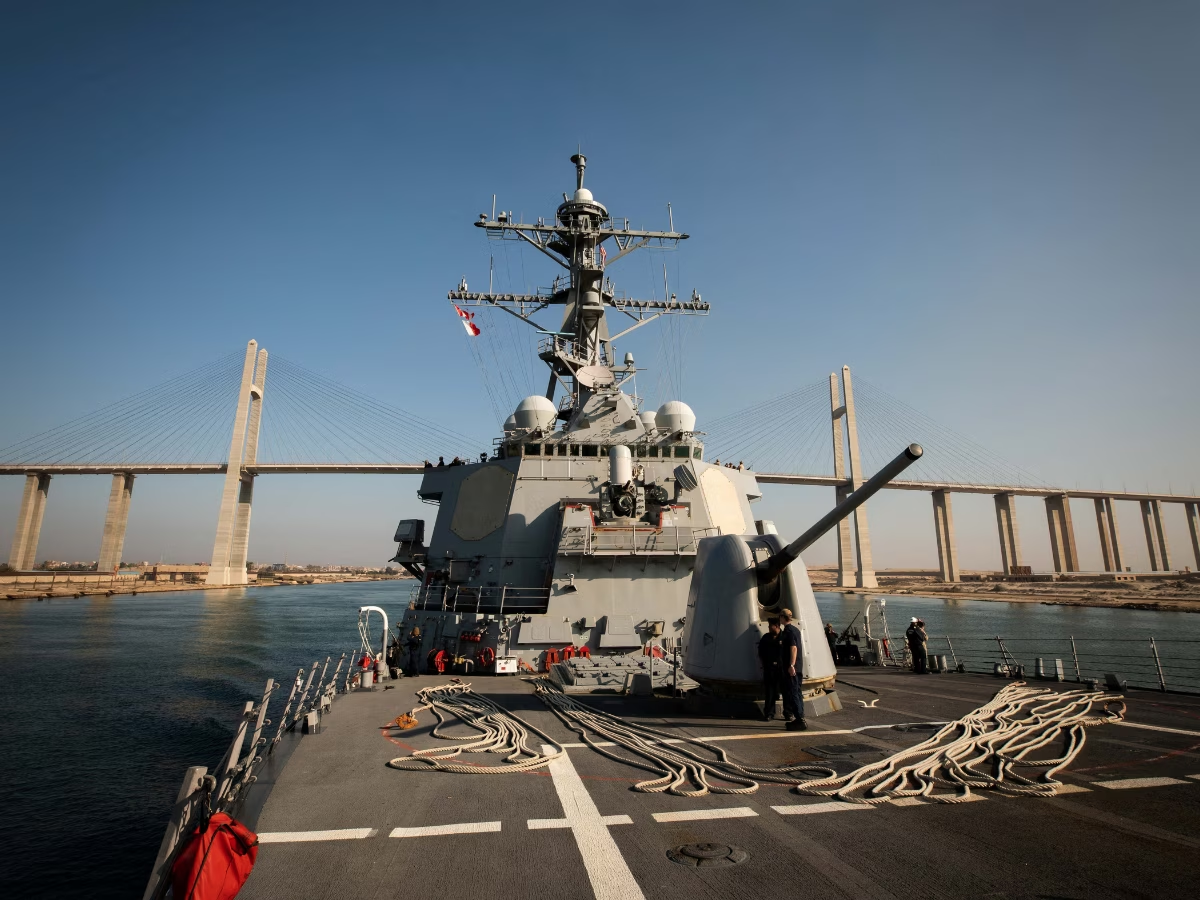US Navy Destroys 14 Houthi Drones In Red Sea, Escalation In Attacks Raises Concerns
In a recent development, the US Navy destroys 14 Houthi drones in Red Sea, escalation in attacks raises concerns.
Author:Tyreece BauerReviewer:Elisa MuellerDec 18, 202317.3K Shares271.2K Views

In a recent development, the US Navy destroys 14 Houthi drones in Red Sea, escalation in attacks raises concerns.
The unmanned aircraft systems were identified as one-way attack drones, posing a threat to the naval forces in the region. Fortunately, the interception resulted in no damage to ships or reported injuries.
Houthi Rebels' Drone Attacks
This incident marks the latest in a series of drone attacks orchestrated by the Iran-backed Houthi rebels in Yemen. With a history of targeting commercial ships using drones and missiles, the rebels' actions have escalated tensions in the region.
The US Navy has been actively responding to these threats, highlighting the strategic significance of the Red Sea in geopolitical dynamics.
“„The Arleigh Burke-class guided missile destroyer USS CARNEY... operating in the Red Sea, successfully engaged 14 unmanned aerial systems launched as a drone wave from Houthi-controlled areas of Yemen.- U.S. Central Command
In recent months, the US military has faced increased challenges from Houthi attacks, with multiple instances of intercepting drones and responding to distress calls from commercial vessels.
The USS Thomas Hudner and USS Mason have been involved in thwarting attacks and providing assistance in the volatile Gulf of Aden.
The US response has included strikes on weapons depots and storage facilities linked to Iran's Islamic Revolutionary Guard Corps and proxy militia groups.

Houthis' Ideological Background And Regional Impact
The Houthi rebels, a Shia political and military organization, have been engaged in a prolonged civil war against a Saudi Arabia-backed coalition since 2014.
Their activities have extended beyond Yemen, with voiced support for Palestinians and protests against Israel's offensive in Gaza.
The recent uptick in Houthi activities coincided with attacks on US forces in Iraq and Syria by other Iran-backed groups, following Hamas' attack on Israel on October 7.
The Houthi threat has not only targeted military vessels but has also affected the shipping industry. Container shipping giant Maersk has ordered ships to halt voyages in the Red Sea after missile strikes on commercial ships.
Similarly, Mediterranean Shipping Company (MSC) announced a rerouting of shipping services away from the Suez Canal, opting for the Cape of Good Hope route after an attack on one of their container ships.
Escalation In Attacks Raises Concerns For Regional Security
The recent attacks on naval and commercial vessels in the Red Sea represent a significant escalation in the threat to shipping.
As tensions rise, questions about the potential impacts on regional security and the broader geopolitical landscape come to the forefront.
The international community closely watches the situation, mindful of the potential consequences of continued Houthi aggression in the strategically vital waterway.
Final Words
The interception of 14 Houthi drones by the US Navy in the Red Sea underscores the escalating tensions in the region. As the Houthi rebels persist in their drone attacks on both military and commercial vessels, the international community grapples with the implications for regional security.
With shipping giants like Maersk and MSC taking precautionary measures, the threat extends beyond naval confrontations to impact the global shipping industry.
The situation remains fluid, raising concerns about the potential consequences of continued Houthi aggression and its broader geopolitical ramifications.
As naval forces and commercial entities adapt to the evolving threat landscape, the Red Sea emerges as a focal point in a complex and volatile geopolitical scenario.

Tyreece Bauer
Author
A trendsetter in the world of digital nomad living, Tyreece Bauer excels in Travel and Cybersecurity. He holds a Bachelor's degree in Computer Science from MIT (Massachusetts Institute of Technology) and is a certified Cybersecurity professional.
As a Digital Nomad, he combines his passion for exploring new destinations with his expertise in ensuring digital security on the go. Tyreece's background includes extensive experience in travel technology, data privacy, and risk management in the travel industry.
He is known for his innovative approach to securing digital systems and protecting sensitive information for travelers and travel companies alike. Tyreece's expertise in cybersecurity for mobile apps, IoT devices, and remote work environments makes him a trusted advisor in the digital nomad community.
Tyreece enjoys documenting his adventures, sharing insights on staying secure while traveling and contributing to the digital nomad lifestyle community.

Elisa Mueller
Reviewer
Elisa Mueller, a Kansas City native, grew up surrounded by the wonders of books and movies, inspired by her parents' passion for education and film.
She earned bachelor's degrees in English and Journalism from the University of Kansas before moving to New York City, where she spent a decade at Entertainment Weekly, visiting film sets worldwide.
With over 8 years in the entertainment industry, Elisa is a seasoned journalist and media analyst, holding a degree in Journalism from NYU. Her insightful critiques have been featured in prestigious publications, cementing her reputation for accuracy and depth.
Outside of work, she enjoys attending film festivals, painting, writing fiction, and studying numerology.
Latest Articles
Popular Articles